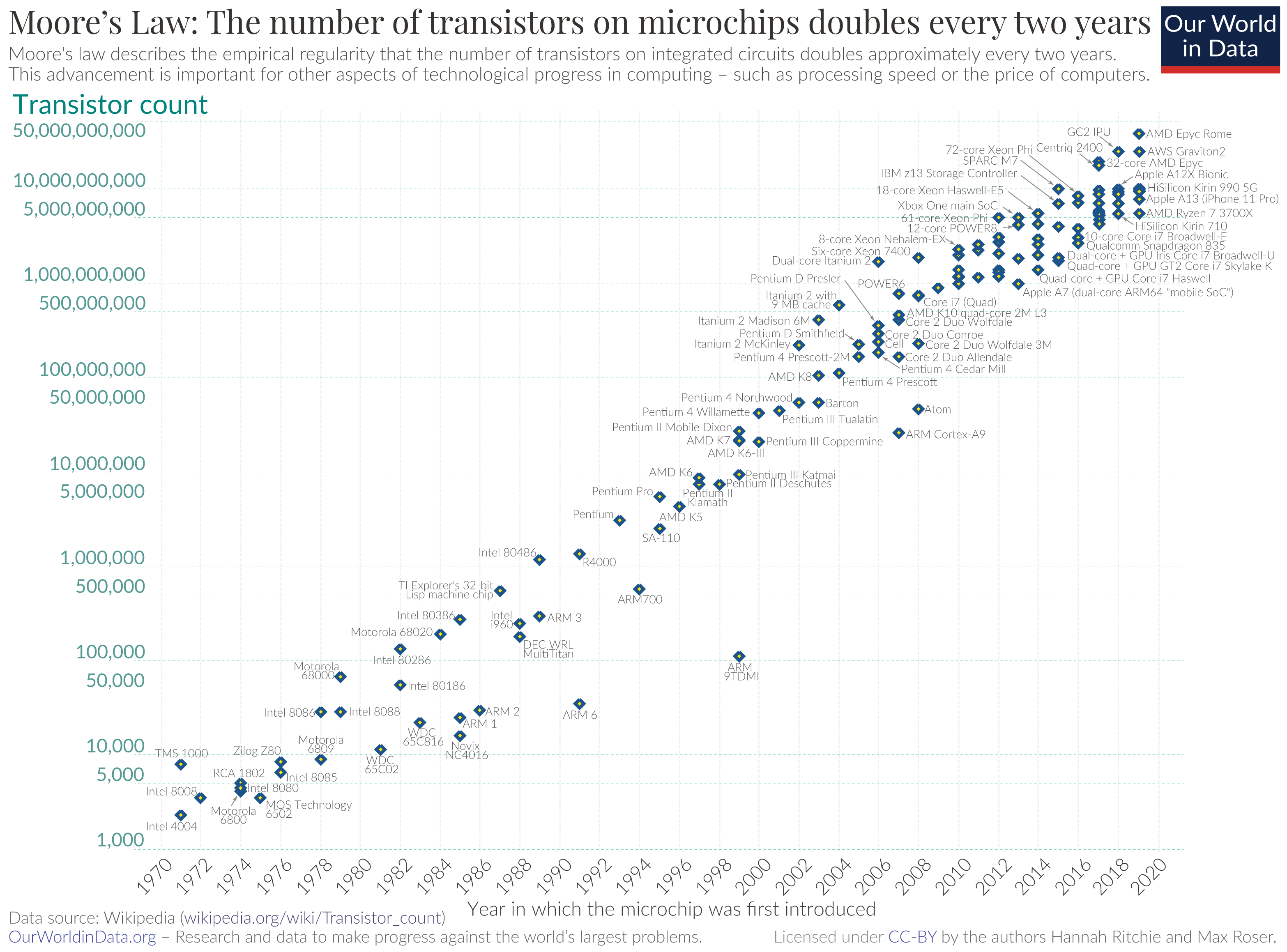
Early in the days of microprocessors and integrated circuits, Moore, co-founder of Intel, professed this now famous empirical observation:
“The number of transistors in a given space doubles every 18 months.’’
His remark turned out to predict the future of the silicon-based integrated circuit for the next 45 years. It’s become a self-fulfilling prophecy now called a law. What is not clear is whether this law is actually describing the phenomenon or if it’s been driving it all along. Engineers in the photolithography space have used it to set the targets that would allow them to keep up with the industry’s pace. They knew that if they failed where their competitors succeeded, they would lose business. As a result, Moore’s observation is now an industry benchmark as well as a problem for current and future innovators to solve.
Pushing the Limits of Innovation
For years, specialists have claimed when challenged that the goals set by the law could not be met anymore. Yet research labs, equipment manufacturers, and fabs themselves keep pushing the limits. They’re told it’s impossible but they keep coming up with new techniques to succeed in integrating more and more transistors in devices.

Source: https://ourworldindata.org/technological-progress
Misinterpretation of Moore’s law
Unfortunately, just like with many other very popular ideas – Moore’s law has been overstretched. Popular ideas have a tendency to become hyperboles and being disfigured by misinterpretation. Extrapolating is a part of human nature, and we’ve done it with Moore’s observation.
The Law Does Not Say That Costs Are Cut In Half Every Three Months
If you design using the latest technology, you will incur much larger costs than using older technology. One reason is that the equipment necessary to manufacture new technology is increasingly expensive. As the features like transistor and junction size get smaller, the equipment has to be more accurate to burn the circuits. The industry’s consolidation is a direct consequence of that. As not every company wanted, or could, make the required investments, only a few vendors in the market now offer the latest technology in silicon wafers printing. The consolidation has increased volumes for these lasting vendors and has allowed paying for the equipment.
The Law Does Not Say That CPU Speed Doubles Every 18 Months
For a good part of the last 50 years that felt true. CPUs were getting faster and faster as their clock went from Mhz to Ghz. However, this clock speed increase has stopped in the last 5 years as improvements are made difficult by a few issues. First, increasing CPU speed means an increase in energy consumption. More energy means that more heat has to be dissipated. This increase in heat used to be compensated by reducing the devices’ voltage, but lower voltage meant less power consumed.
See what kind of problem we’re facing?
We have hit a limit on voltage reduction. Nowadays, devices’ voltage is just high enough to be above junction threshold and reducing them would cause a loss of efficiency. However, this does not mean that CPUs are not faster at processing information. It’s just that they are no gains from higher clock speeds anymore.
The Law Does Not Concern Storage Growth
Another area where Moore’s law is overextending is in the storage space of devices. Contrary to what many believe, storage growth does not follow the same rules, but that’s a topic in itself that I’ll keep for another post.
Over-Extended, But Still Beneficial
Even if the clock speed increase has stopped, we continue to benefit from Moore’s law with the silicon-based integrated circuit’s reduction in size. For a relatively stable price, we have more and more computational capabilities. Late in the last decade, entire systems were built on a single chip. All of the devices that used to be parts of a system like the northbridge, the southbridge, the input and output devices, the co-processors, the cache memory (level 1,2,3), and more have moved into a single device. If you open a laptop, you will find a very small number of chips. Companies now integrate as much as they can into one device in order to gain cost and size benefits. More, and wider, parallel processing components have also been added to perform graphics, video, 3D, and Machine Learning processing. The same way, memory buses have been widened for increased bandwidth.
The Future Impact of Moore’s Law on Consumers
So Moore’s law lives on, but only a few manufacturers, namely Intel, AMD, Apple, Samsung, and Qualcomm, have managed to use all the knowledge necessary to build these new generations of highly-integrated CPUs. The other manufacturers of peripheral devices have now disappeared. This double consolidation of CPU vendors and Fab is bound to have an impact on the markets going forward. These very highly-consolidated markets are known to lead to a reduction in innovation and an increase in prices… Are the consumers of the future still going to benefit from the advancements promised by Moore’s law? Let’s see.



